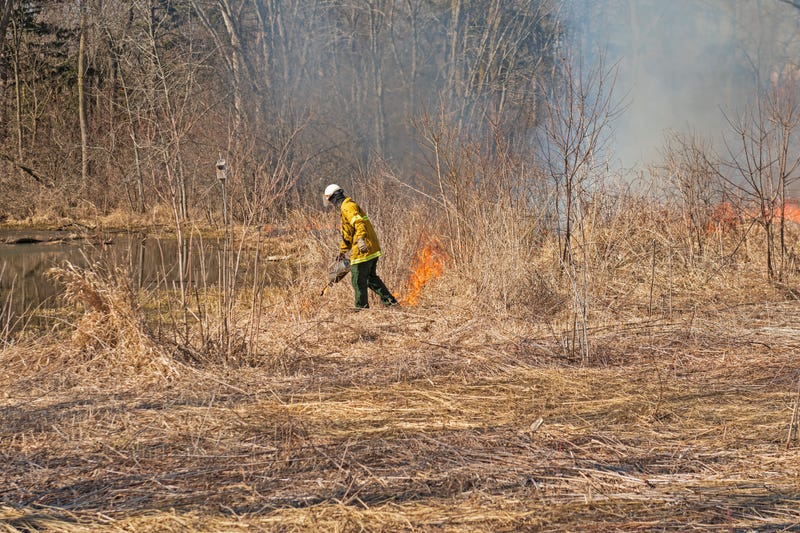
HARTFORD, Conn. (WTIC Radio) - The Connecticut Department of Energy and Environmental Protection is announcing its plans to controlled burns at six location this spring.
They are going to take place at the following locations, weather and conditions permitting:
- James L. Goodwin State Forest, Hampton (~10 acres)
Three old fields will be burned to rejuvenate grassland habitats that are becoming infested with invasive plants such as Asiatic bittersweet, Japanese barberry, multiflora rose, and autumn olive. These burns will provide the Goodwin Conservation Center with a prescribed fire demonstration area for educational purposes and also will provide a wildfire suppression training opportunity for DEEP staff and local fire department members.
- Pachaug State Forest, Pratt Road, Voluntown (~6 acres)
This burn aims to promote the resilience of 6 acres of rare and imperiled pitch pine-scrub oak sandplain habitat. The burn will interrupt the growth of white pine and other species in direct competition with pitch pine and other rare vegetation. The fire also will reduce competing understory vegetation and woody debris creating favorable conditions for pitch pine and scrub oak seedlings and saplings.
- Pachaug State Forest (Shetucket Barren), Voluntown (~20 acres)
The goal of this project is to manage vegetation using prescribed fire within a 19.5-acre portion of Pachaug State Forest, the Wickaboxet Block, a state-owned natural area. The overall goal is to sustain and enhance shrubland and open woodland habitats that support Species of Greatest Conservation Need.
- Quinebaug River Wildlife Management Area, Plainfield (~10 acres)
This project aims to manage vegetation using prescribed fire within a 10-acre portion of Quinebaug River Wildlife Management Area, a state-owned natural area managed for wildlife conservation and wildlife-based recreation. The overall goal is to sustain and enhance sandplain grassland and pitch pine barren habitat, underrepresented natural communities that support many Species of Greatest Conservation Need.
- Suffield Wildlife Management Area, Suffield (~70 acres)
The aim of this project is to manage vegetation using prescribed fire within the Suffield Wildlife Management Area, a state-owned natural area managed for wildlife conservation and wildlife-based recreation. The overall goal is to sustain and enhance sandplain grassland habitat to support grassland nesting birds like the upland sandpiper, grasshopper sparrow, eastern meadowlark, and savannah sparrow. These grassland birds are on Connecticut’s Endangered, Threatened, and Special Concern Species List.
- Mansfield Hollow State Park, Mansfield, and Belding Wildlife Management Area, Vernon (~1 acre)
The purpose of these burns is to sustain and enhance grassland habitat for the benefit of plants and wildlife.
The DEEP says Connecticut consists mainly of older forests, estimated to be 90-130 years old.
Grassland habitat is limited in our state, as most abandoned farmland has either been developed or allowed to revert to forest.
Prescribed fire is one tool that can effectively maintain grassland habitat. Fire also returns nutrients to the soil, encouraging native grass species to flourish.
